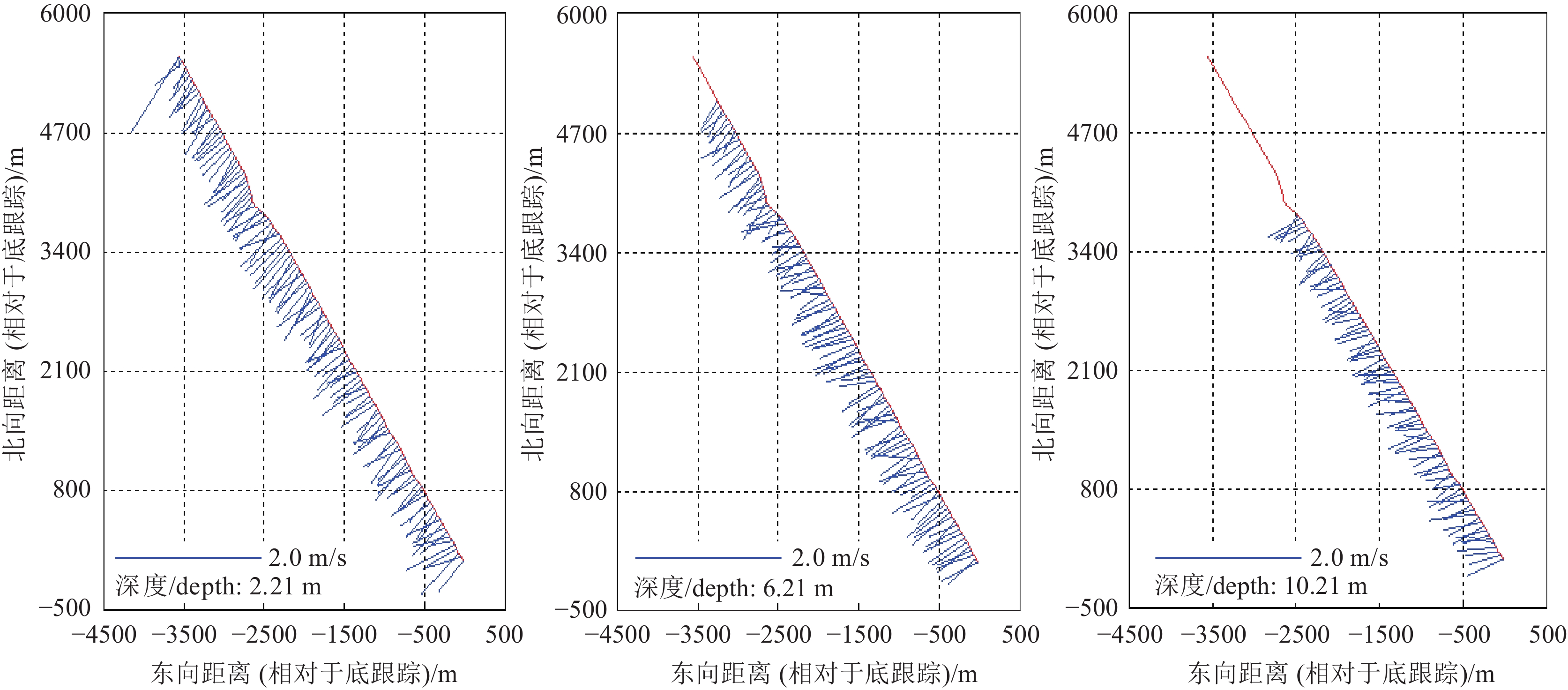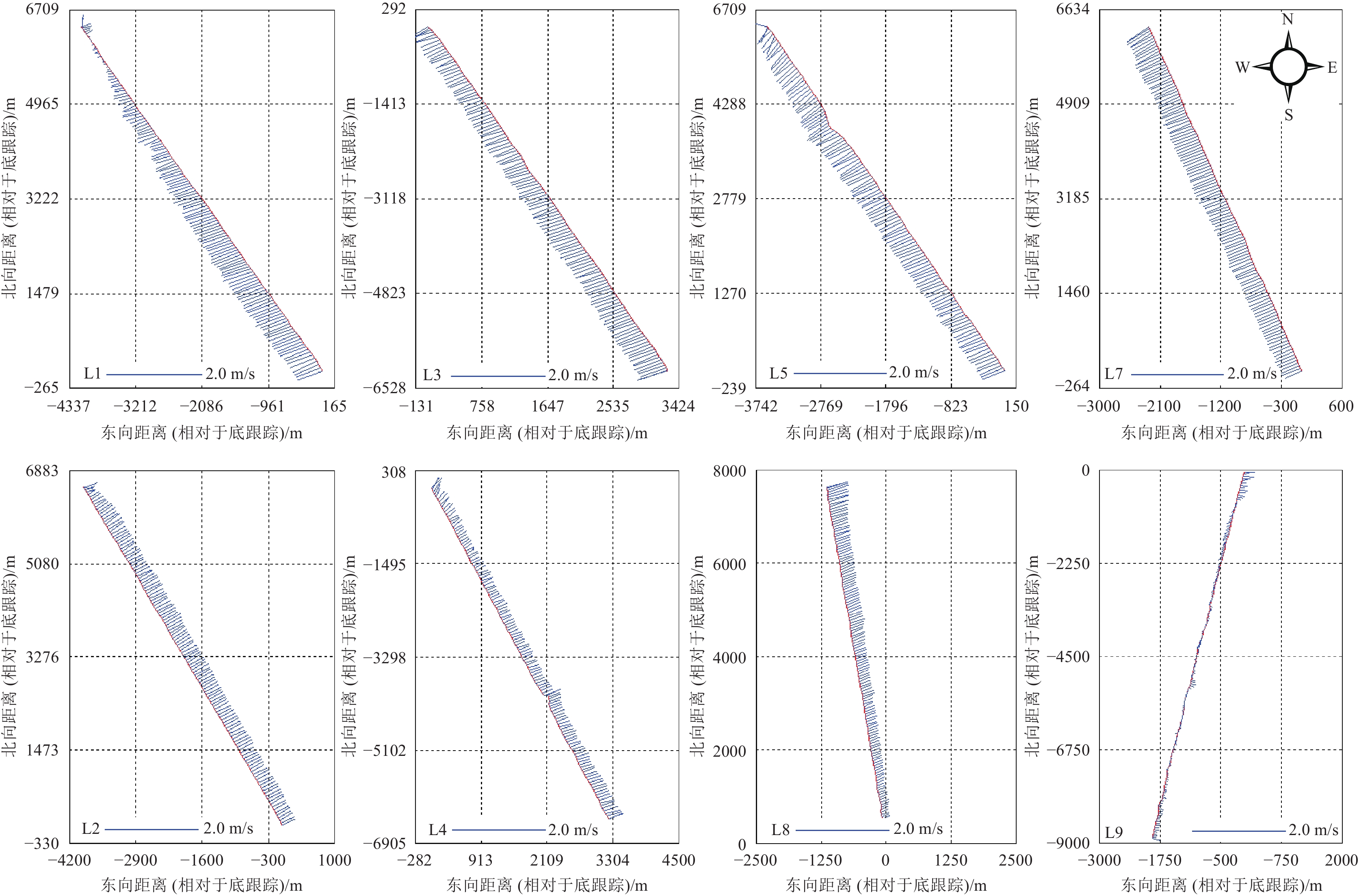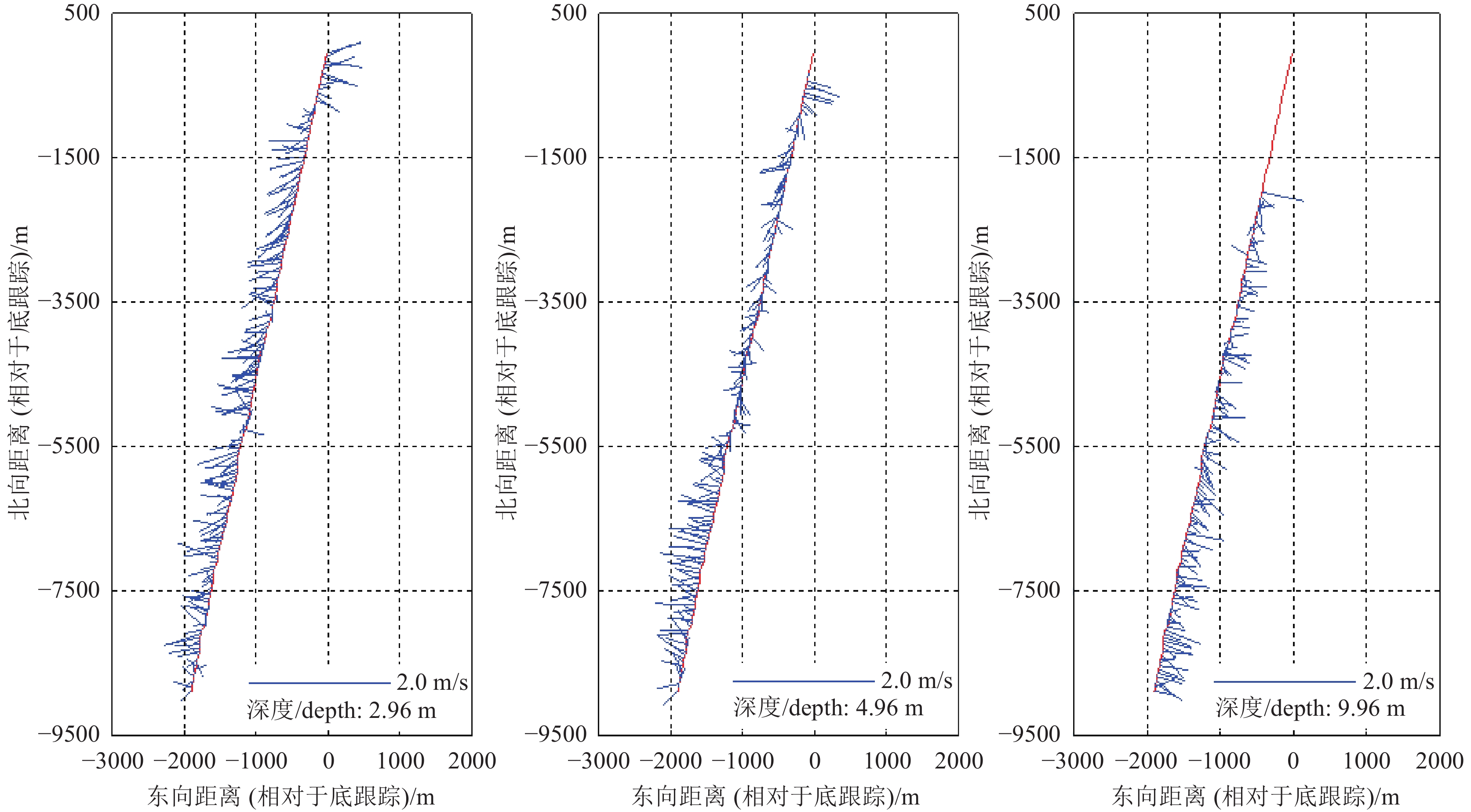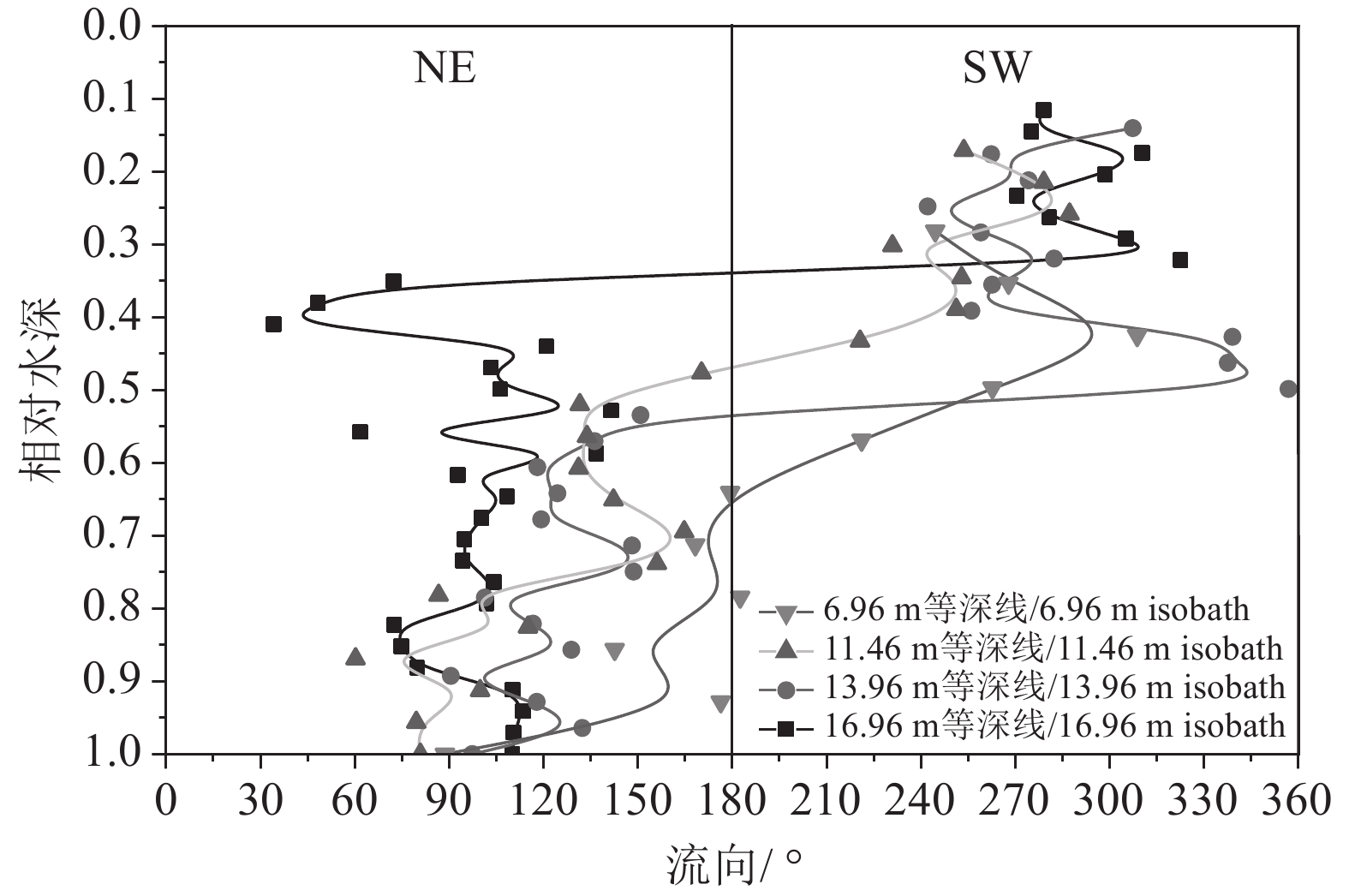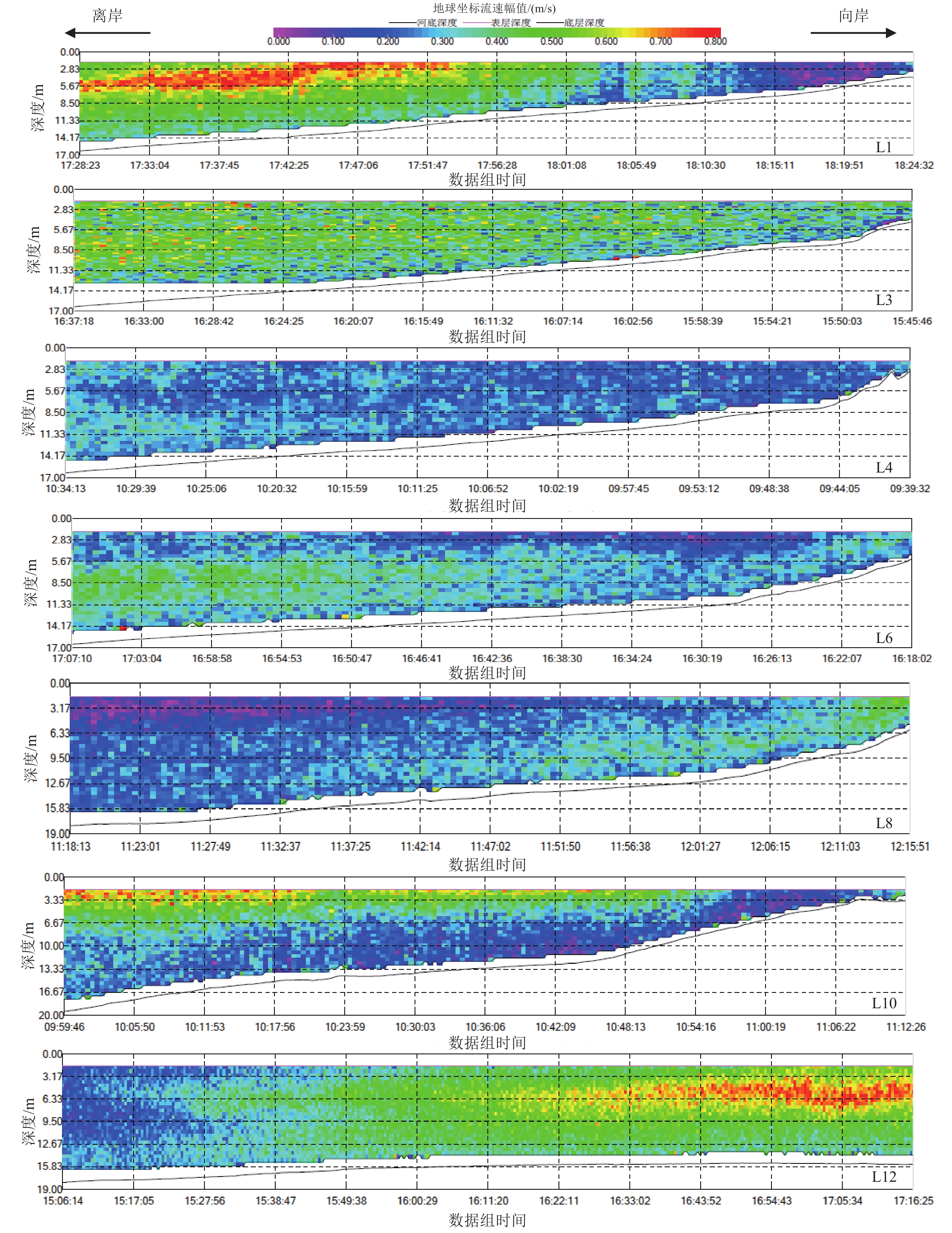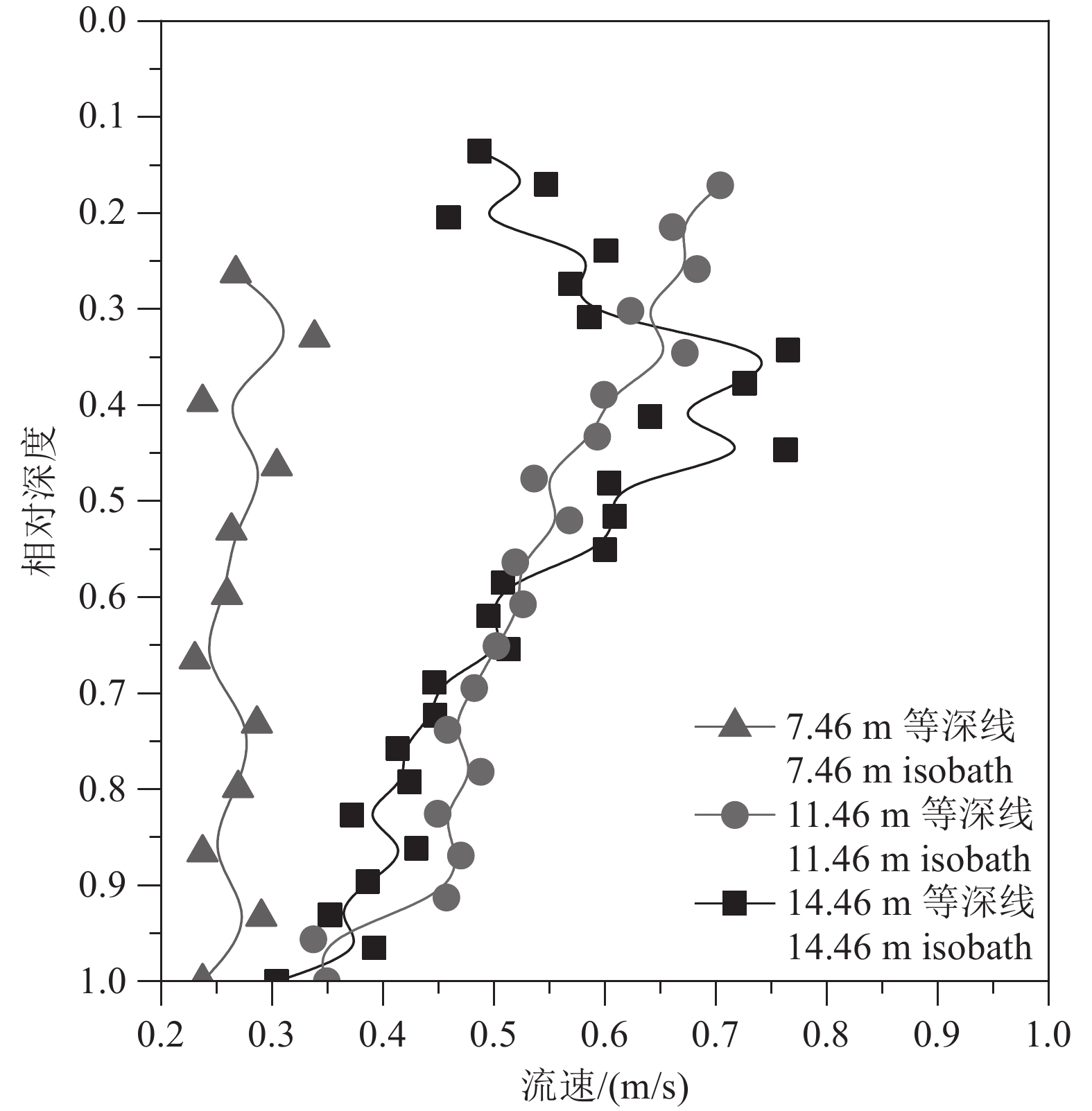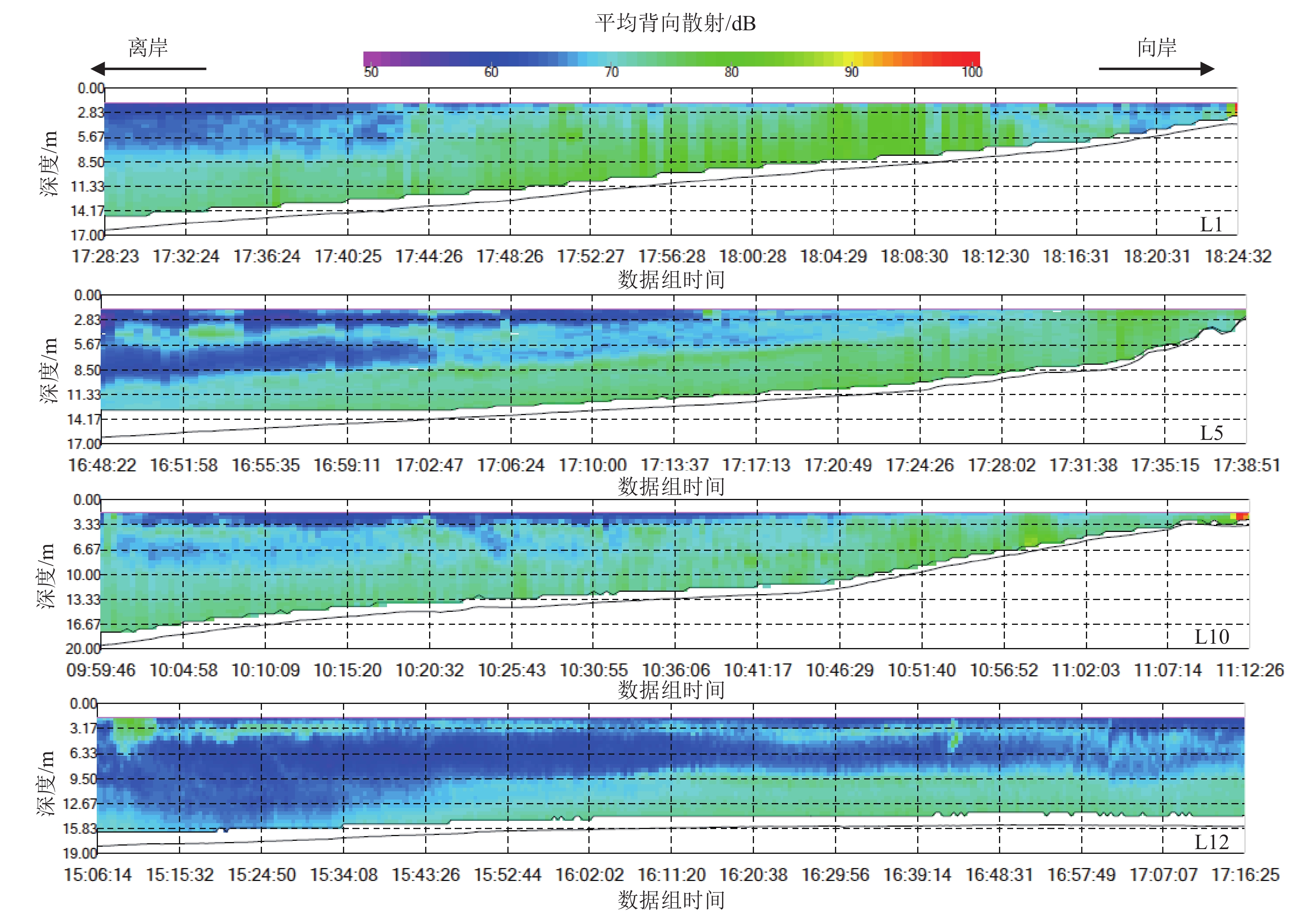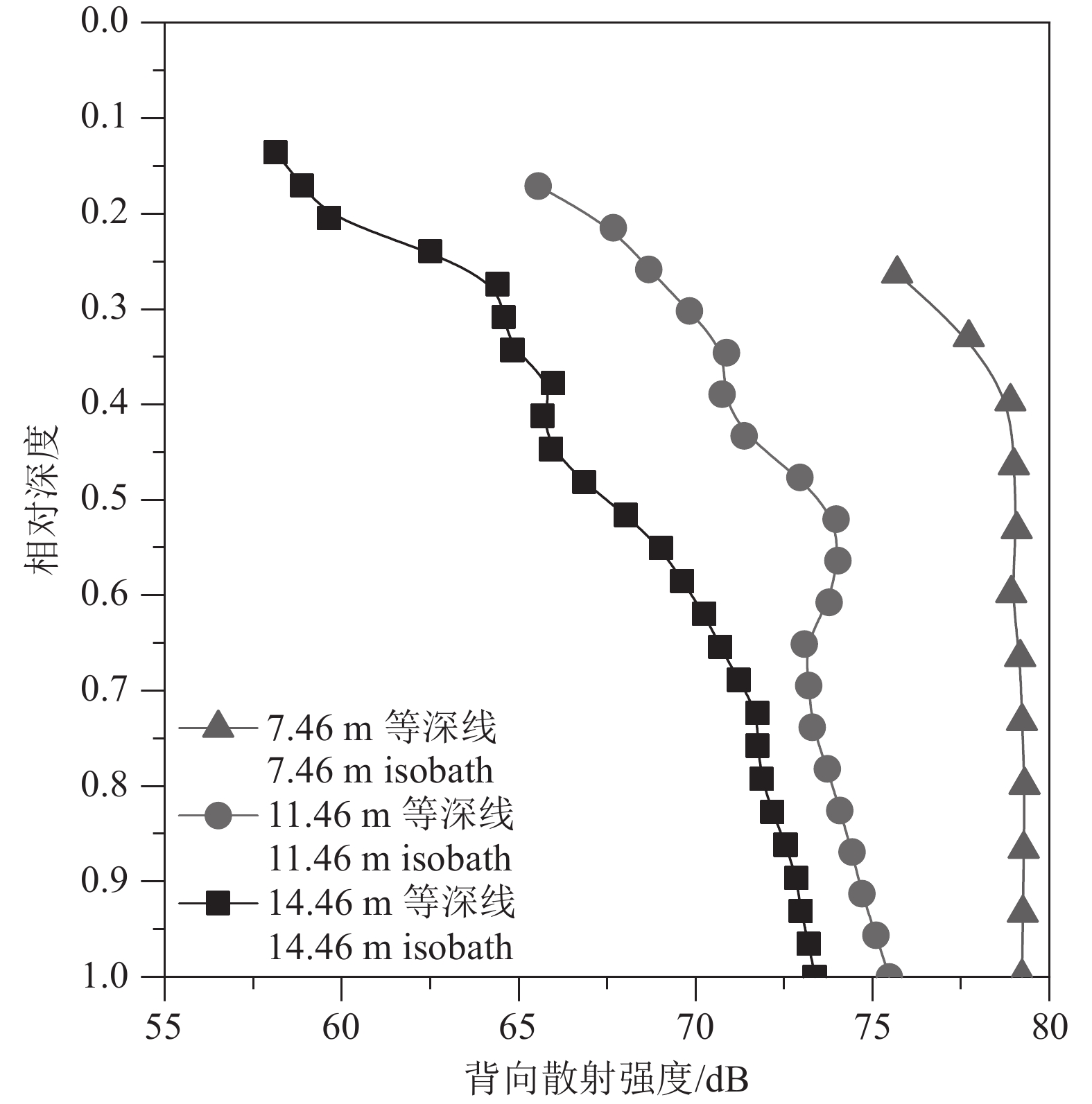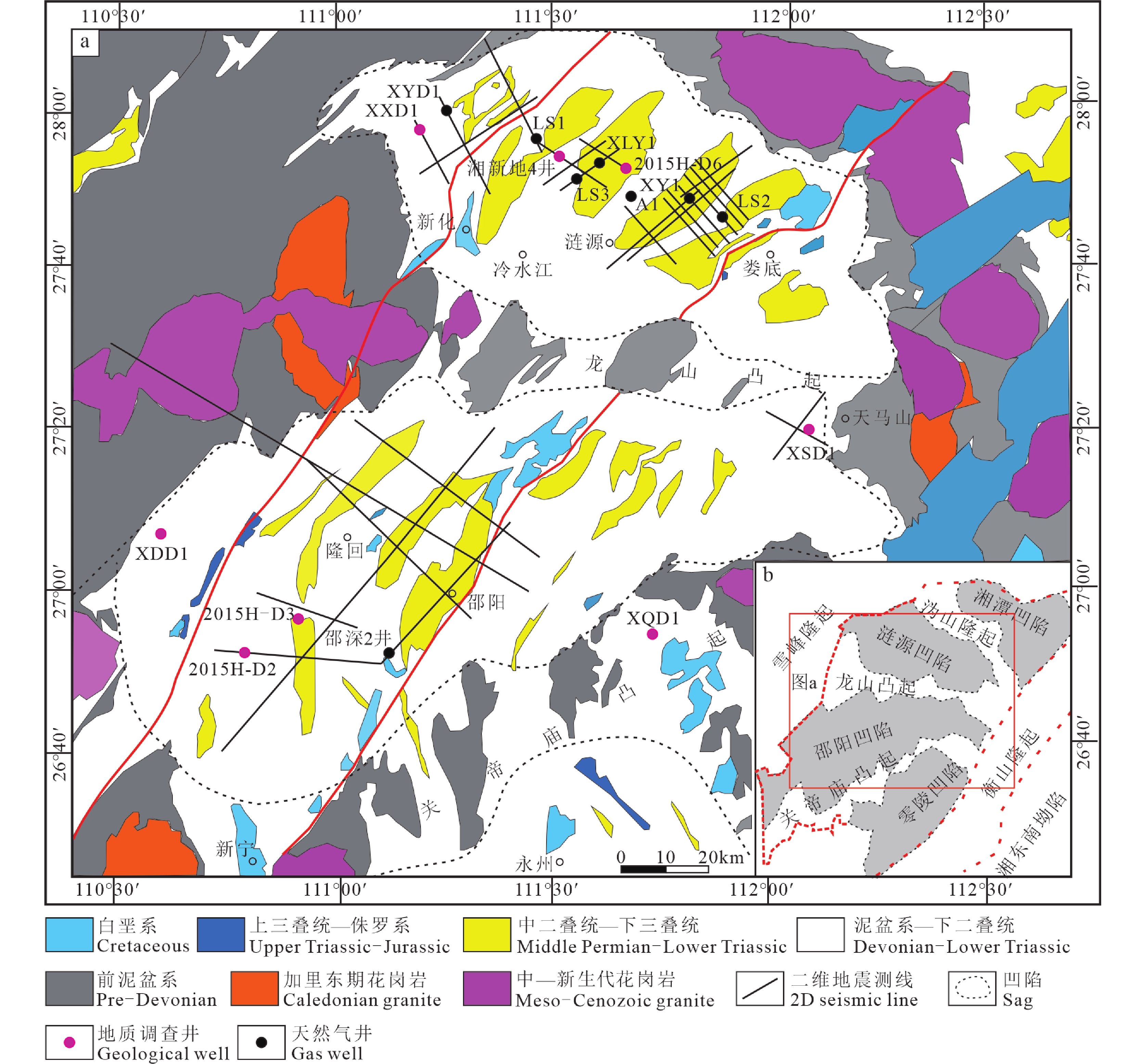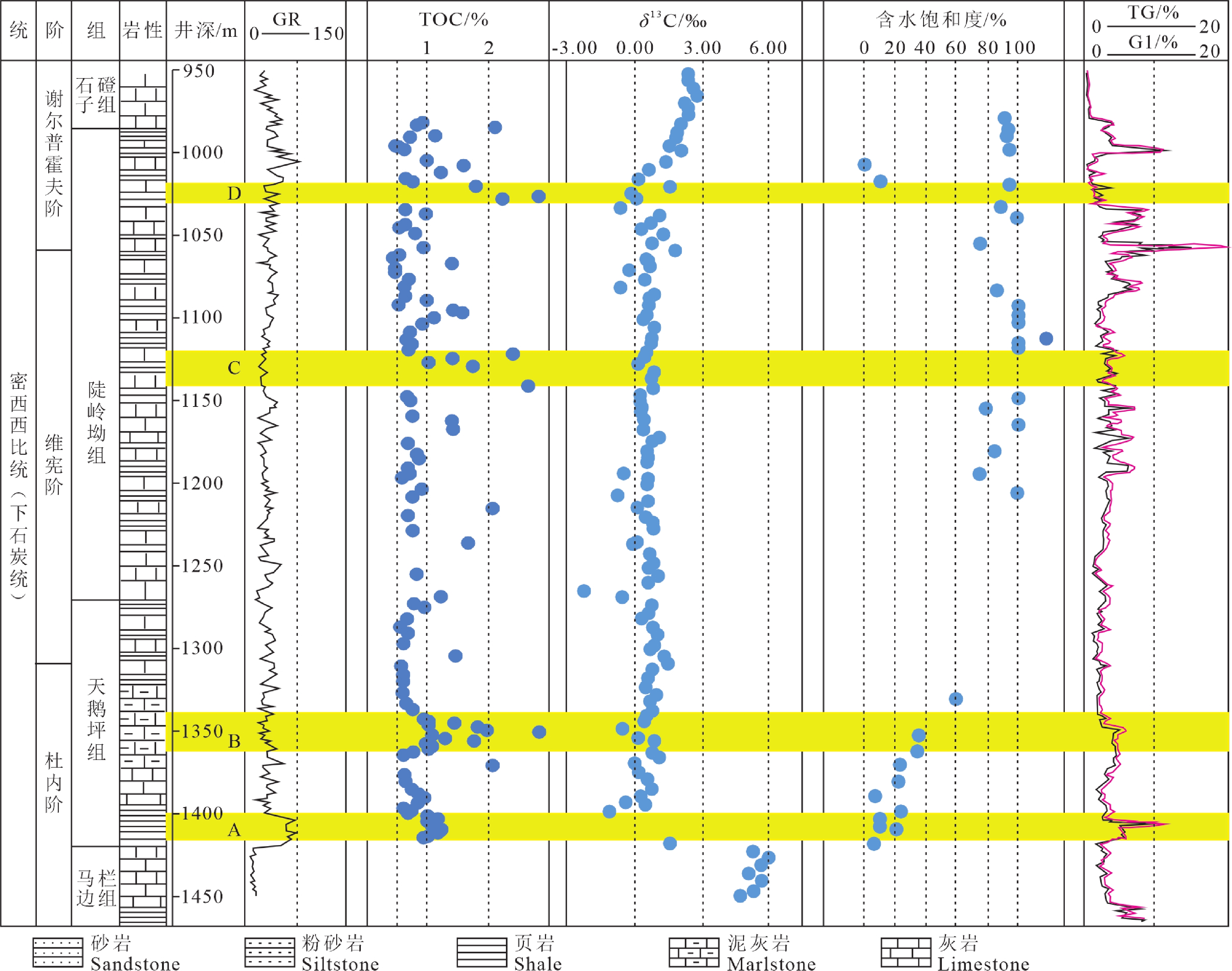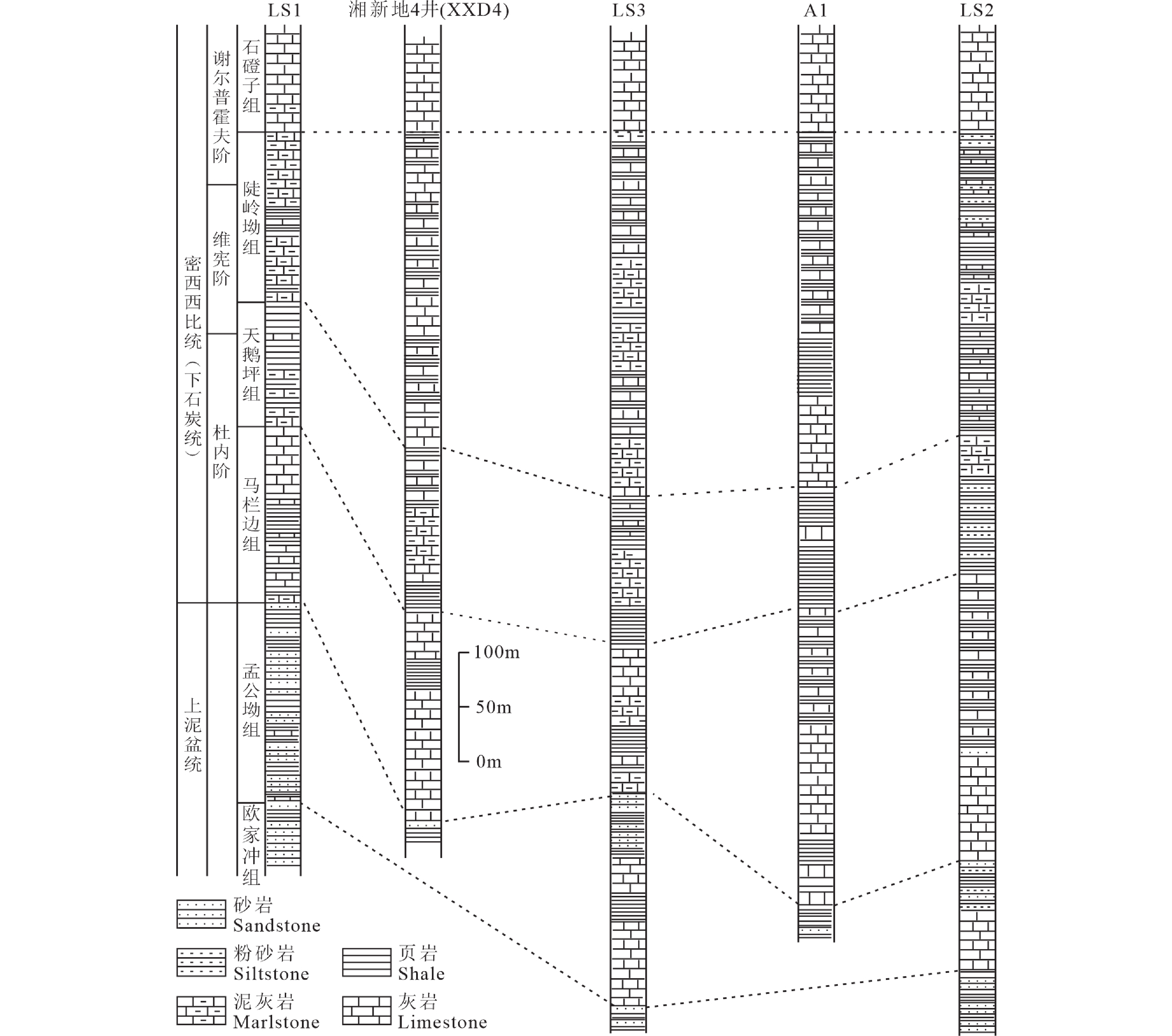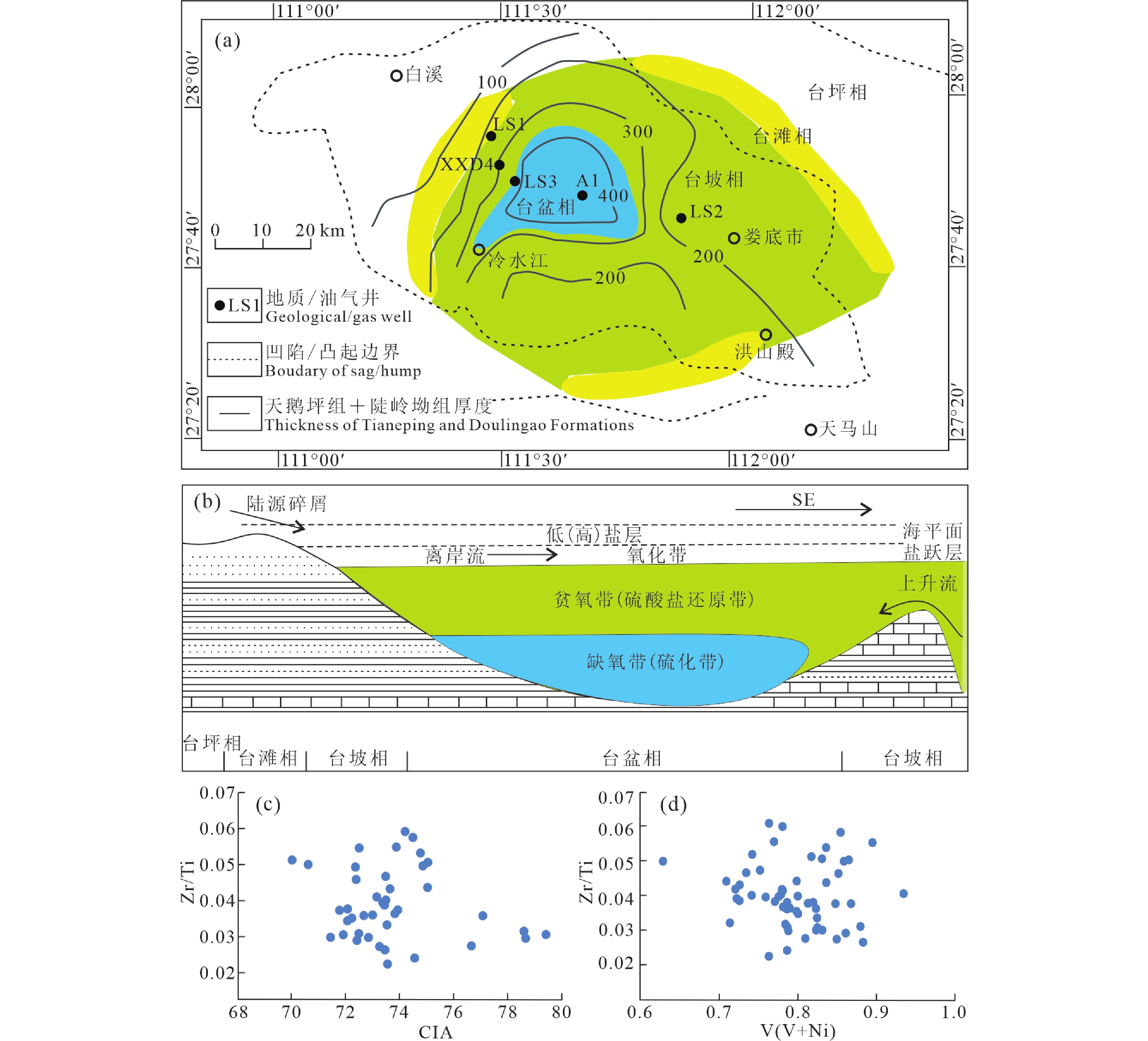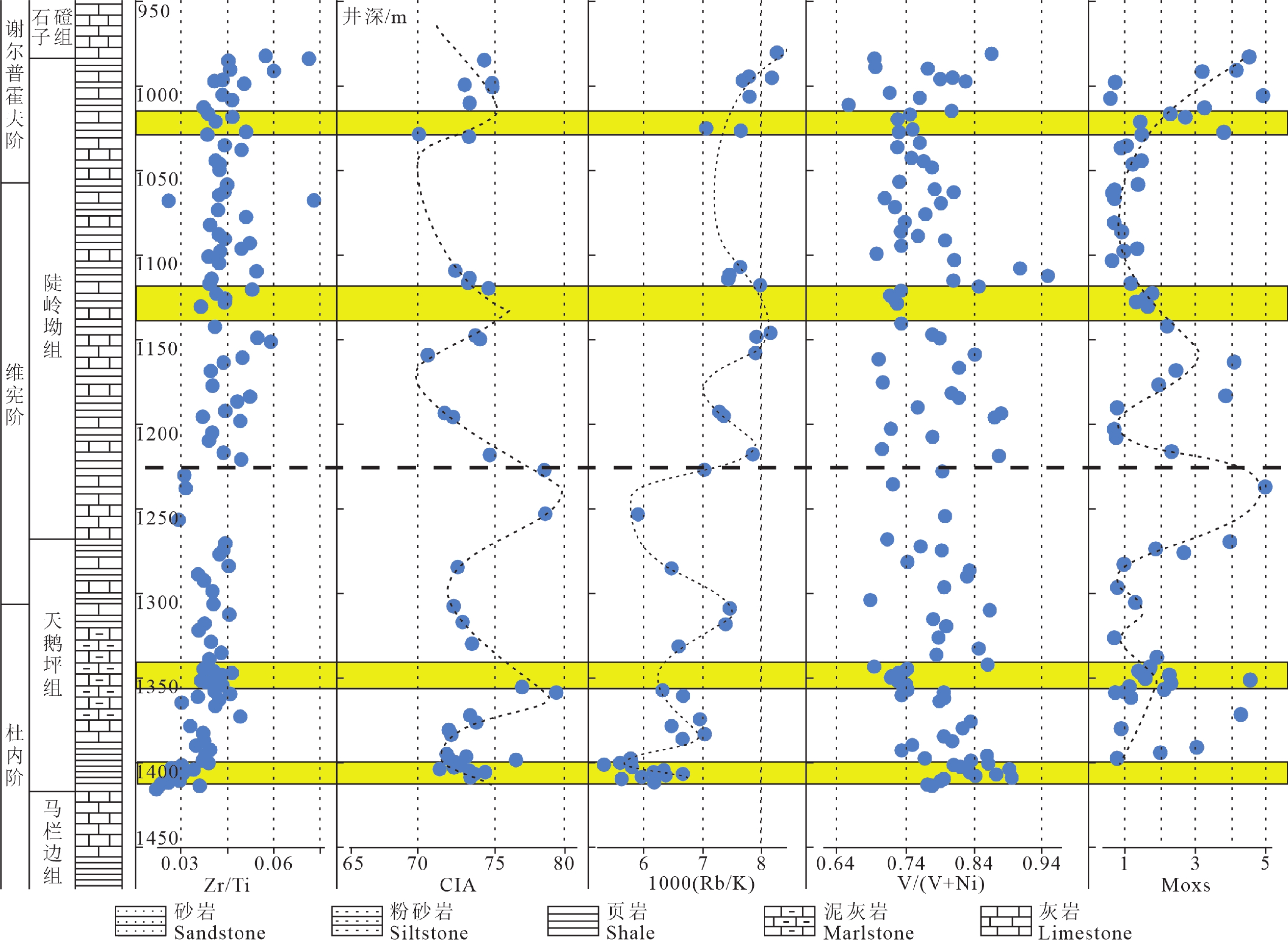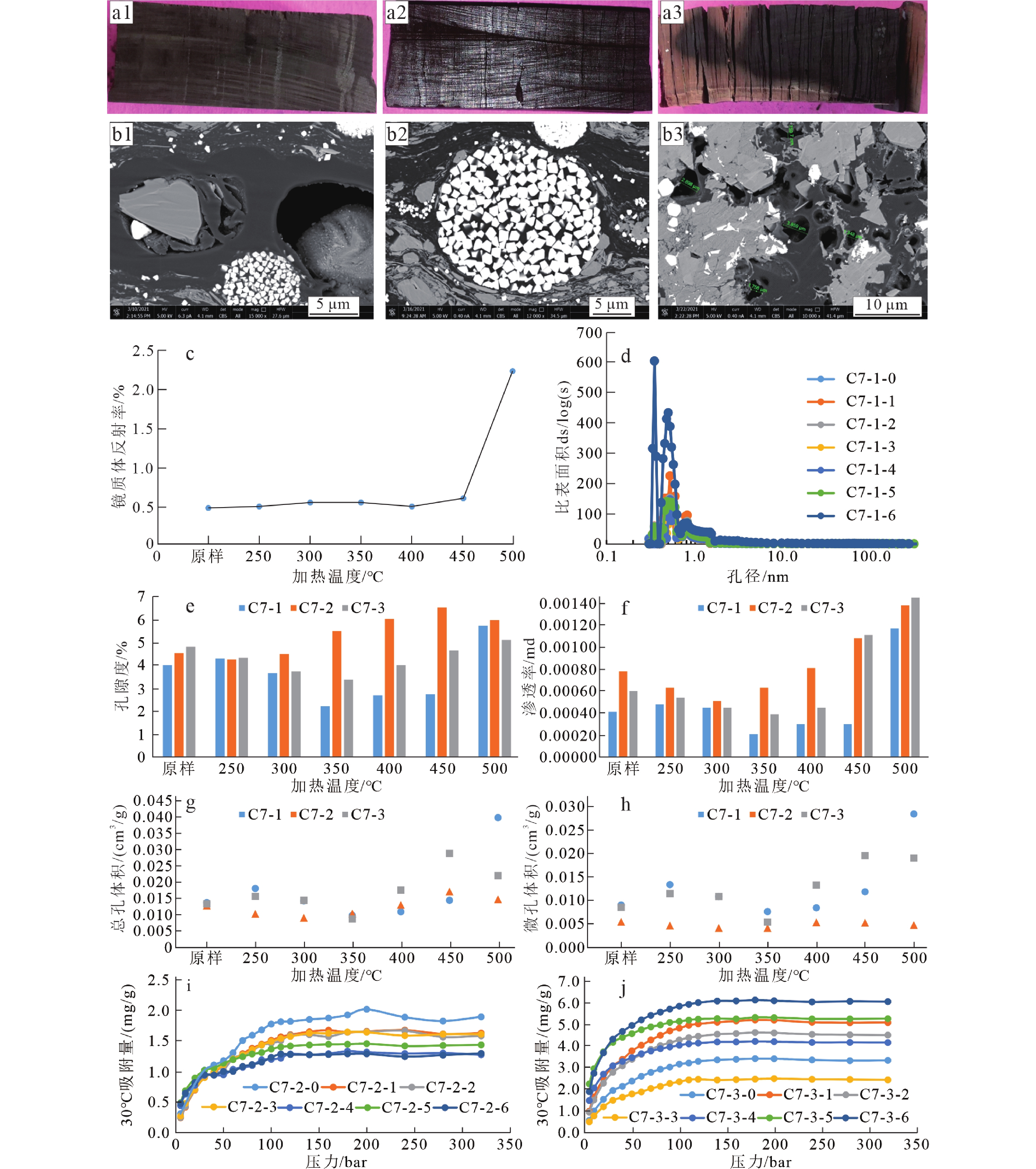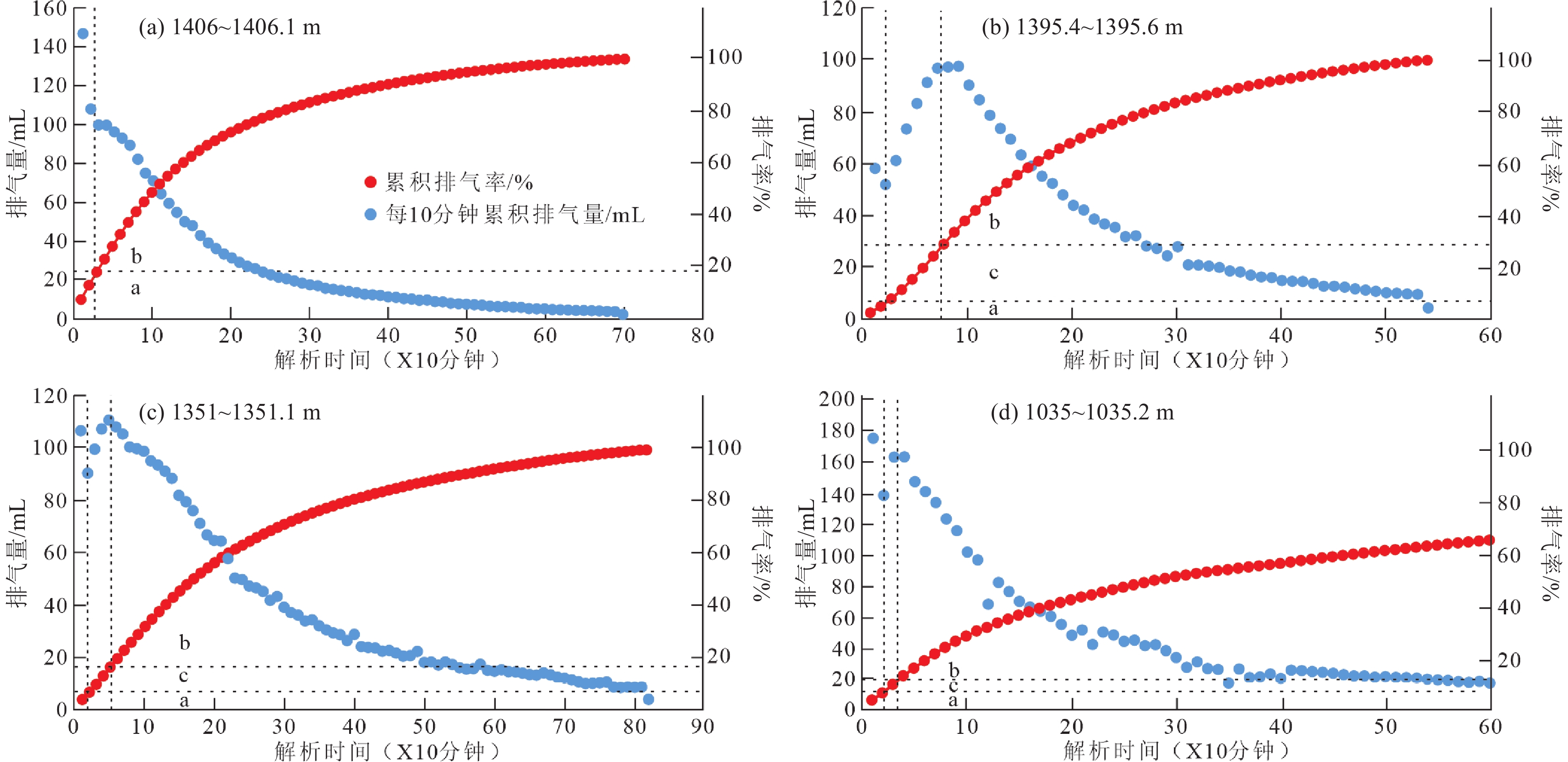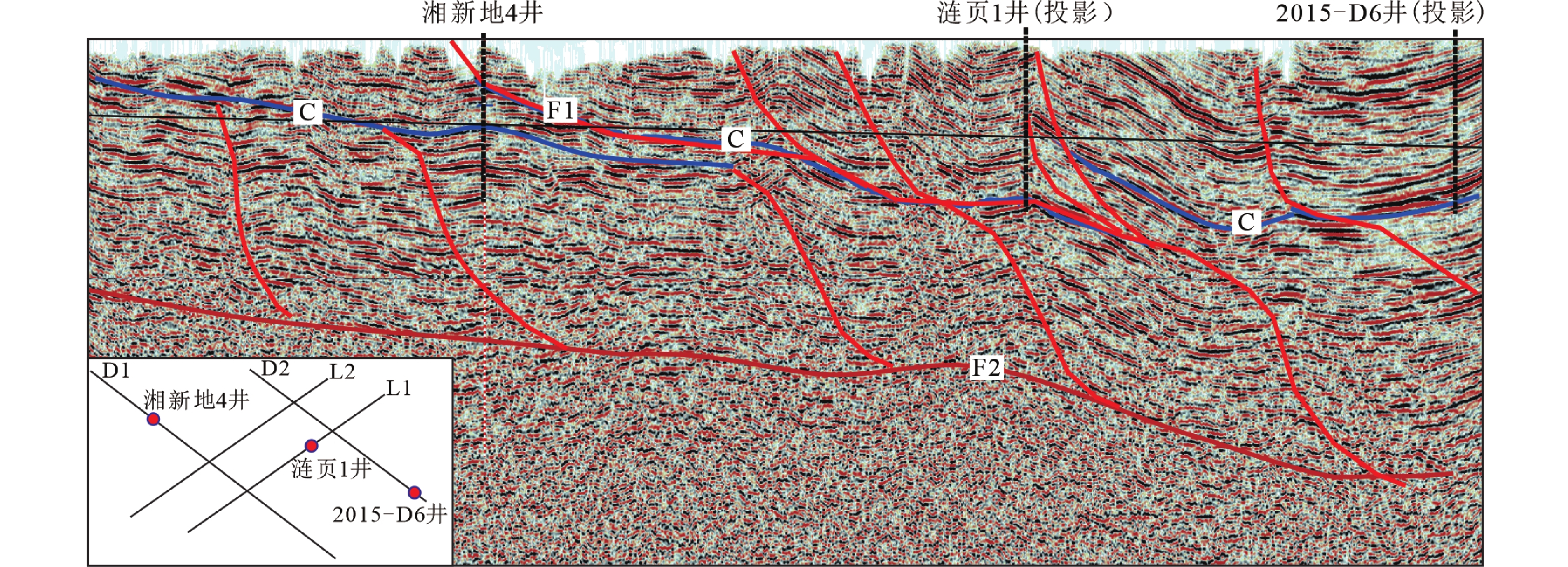Mechanism of organic-rich shale formation and shale gas enrichment in the Carboniferous Tian’eping Formation from the Xiangzhong Depression
-
摘要:研究目的
本文旨在通过页岩成因和页岩气富集机理研究,确定湘中坳陷下石炭统天鹅坪组页岩气形成富集主控因素和富集模式。
研究方法以湘新地4井为重点,通过下石炭统碳酸盐岩稳定碳、氧同位素、页岩全岩氧化物和微量元素含量测定,分析页岩形成的古气候、古环境特点,确定富有机质页岩的成因。在系统查明页岩岩石矿物学、有机地化和储存物性特征以及页岩气赋存方式和构造保存条件基础上,结合中—低成熟页岩储存的热演化模拟结果,确定页岩气富集机理。
研究结果(1)下石炭统天鹅坪组富有机质页岩是全球早石炭世杜内期气候剧烈波动引起海水分层,海底缺氧的沉积产物。(2)涟源地区中生代广泛而强烈的岩浆事件导致区域古地温梯度升高,并引起天鹅坪组页岩发生二次生烃和储层物性的改善。天鹅坪组页岩气是印支期油气调整后,页岩中原油裂解和有机质二次生烃的共同结果。(3)发育在下石炭统测水煤系中的滑脱构造部分封堵了下伏天鹅坪组页岩气的垂直逸散通道,有利于页岩气的保存富集。
结论湘中坳陷下石炭统天鹅坪组页岩气是有利相带控制总有机碳含量、岩浆热作用控制储层物性和滑脱构造控制保存的共同结果。
创新点:(1)气候重大转折期古大陆边缘凹陷盆地是页岩气勘探的有利相带;(2)岩浆热作用制约区域页岩有机质热演化程度和页岩气储存的品质;(3)滑脱构造下盘是页岩气勘探的最有利区域。
Abstract:This paper is the result of oil and gas exploration engineering.
ObjectiveThrough the study of shale formation and shale gas enrichment mechanism, the current study aims at finding out main factor controlling shale gas reservoir in the Carboniferous Tian’eping Formation in the Xiangzhong Depression as well as its enrichment patterns.
MethodsCarbonates carbon and oxygen isotopes as well as shale trace elements and major elements were analyzed at Xiangxindi 4 core in order to recover paleo−environment and investigate the origin for the shale formation. Combined with the thermal evolution simulation of medium−low maturity shale gas reservoirs, the mechanism for shale gas enrichment is identified through petromineralogy, organic geochemistry, physical properties of shale gas reservoirs, existence forms of shale gas and tectonic preservation condition.
Results(1) The organic−rich shale in Lower Carboniferous Tian’eping Formation were formed due to seawater stratification and seabed anoxia caused by the intensive climatic fluctuations in the Early Carboniferous. (2) The extensive and intense magmatic events in central Hunan led to the increase of locally paleogeothermal gradient and further caused secondary hydrocarbon generation in the Lower Carboniferous organic−rich shale. Shale gas in the Tian’eping Formation was formed owing to crude oil cracking and secondary hydrocarbon generation of organic matter. (3) Shale gas preservation was promoted due to decollement in the Ceshi Formation of the lower Carboniferous blocking the vertical escaping channel of the shale gas from the underlying Tian’eping Formation.
ConclusionsThe shale gas of Lower Carboniferous Tian’eping Formation in central Hunan Depression is the common result of favorable facies zone controlling the total organic carbon content, magmatic thermogenesis controlling the reservoir physical properties and detachment structure controlling the preservation.
Highlights:(1) Paleo depression in the continental margin during the major climate transition period is benefit for shale gas exploration. (2) Organic matter thermal evolution in regional shale and shale gas preservation are limited by magmatism. (3) The decollement footwall is the most favorable area for shale gas exploration.
-
1. 引 言
流速、流向及悬浮沉积物浓度对海洋物理、生物、化学要素的循环具有重要影响,是研究浅海及河口地区泥沙输运、物质运移的基本要素。同步获取研究区全剖面的流速、流向及悬浮沉积物浓度对于理解悬浮沉积物输运过程、预测营养盐及污染物的迁移和归宿等问题具有重要的意义。传统的测流方法常采用单点式流速仪,对测点不同深度流速进行逐点测量以获得整个剖面的流速;悬浮沉积物浓度的测量常采用取样过滤称重法,该方法不但费时费力,而且在时间和空间的分辨率有限。
声学技术在海洋观测领域的发展应用,使得海洋水文要素的测量有了质的改变,声学多普勒剖面流速仪(Acoustic Doppler Current Profiler,ADCP),能够快速获得某个完整剖面的流速、流向等参数,同时仪器同步记录的声学背向散射强度可间接计算所测海域悬浮沉积物浓度的分布情况,为海洋泥沙动力输运的研究提供可靠的数据支撑。声学法具有不采样、水体不受扰动、精度高等特点,已被广泛应用于海洋水文要素测量中(Simpson, 2001; Yorke and Oberg, 2002; Ha and Maa, 2008; Salehi and Strom, 2011;张英豪和赖锡军, 2014; Li et al., 2019)。船载走航式ADCP是指将ADCP搭载在调查船上,结合精准的导航系统,在船只走航过程中对所测海域的海流进行连续全剖面测量,具有不扰动流场、测量历时短、测量范围大、充分利用航时等特点,已被广泛应用到江河湖海的流速、流量测量中。如1997 年三峡工程大江截流和2002 年三峡工程明渠截流(杨丰和杨俊青,2004),以及广东北江飞来峡工程截流等(刘勇胜和黄程鹏,2014),杭州湾跨海大桥、港珠澳大桥等工程也均使用ADCP 进行了流速测量(刘彦祥,2016)。
祥云岛位于乐亭县东南部,京唐港与北港之间的沿海地带,岸滩分布有优质天然细沙,是著名的沿海旅游沙岛。祥云岛外海7~15 m等深线海域建有海洋牧场,占海面积1333 hm2。近年来,祥云岛受人为活动及海洋水动力条件影响,沿岸不同区域均出现了不同程度的侵淤现象(陈文超等,2016;汪翡翠等,2021);与此同时,海洋牧场等近岸工程的建设带来的环境效应逐渐受到重视,如崔雷等(2017)通过耦合二维浅水水动力数值模型及物质输运数值模型,对京唐港填海工程中周边潮流场及悬浮沉积物运移进行模拟研究,并分析了对海域水质环境的影响。因此,对祥云岛海域流速、流向及悬浮沉积物浓度的快速同步调查,对祥云岛及其近海工程的生态环境具有重要意义。本文通过船载走航式ADCP在祥云岛海域进行现场海流、悬浮沉积物全剖面测量,为该海域海洋动力、泥沙输运及祥云岛岸线演化等海洋过程的研究提供支撑。
2. 现场调查
2.1 ADCP测流原理
ADCP基于多普勒原理(刘德铸,2010;张春海和董晓冰,2013),通过测定声波入射到海水中微颗粒背向散射在频率上的多普勒频移,从而得到不同水层水体的运动速度。所谓声学多普勒效应是指当物体相对于声源有径向位移时,导致观测到的声源发生改变的现象。多普勒频移与散射粒子速度之间的关系为:
Fd=2FVC 式中:Fd为声学多普勒频移;F为发射声波的频率;V为颗粒物沿声束方向的相对速度;C为声波在海水中的传播速度,式中“2”是因为ADCP发射并接收回波,所以多普勒频移加倍。假定水体中颗粒物的运动速度和水流速度一致,ADCP通过跟踪颗粒物的运动,测定水流相对于ADCP的速度,此速度扣除船速后,即可得到水流的绝对速度(杨锦坤等,2009)。
此外,由于散射ADCP发射波的颗粒物主要是悬浮沉积物,ADCP同步接收水中散射体的回波强度信号的大小能够间接反映水中悬浮沉积物浓度(杨惠丽等,2017)。利用ADCP背向散射强度反演悬浮沉积物含量是一种便捷,高效的方法,其非干扰式的测量特性更易获得真值。自Deines (1999)提出了声学多普勒剖面仪测得的背向散射强度与悬浮沉积物含量的关系后,许多学者也逐步开展了利用ADCP的背向散射强度反演悬浮沉积物含量的研究(Glenn et al., 1999; Hoitink, et al., 2005; Merckelbach et al., 2006; Gunawan et al., 2010)。已有研究表明源声波散射强度的大小与散射水体中的悬浮物浓度的大小成正比(Thorne and Campbell, 1992),在受潮流、潮汐作用强烈的近岸海域,利用回归公式反演的悬浮沉积物浓度与实测数据的平均误差小于20%(姬厚德等,2018)。对于有限海域,泥沙类型和粒径相对均一情况下,声学散射强度与泥沙浓度的关系可简化为公式:lg(C)=K1E+K2,其中C为悬浮沉积物浓度,E为回波强度,K1、K2为拟合因子,通过现场泥沙浓度和回波强度的回归分析来标定(Farmer, 1998)。
2.2 调查区域及测线布置
祥云岛长约13 km,呈NE-SW走向,岛屿面积20.68 km2,属于离岸沙坝岛。祥云岛东北段为潮汐通道,现已人为改造,西南端为大清河口;东部靠海侧建有简易的人工沙堤,中西部靠海侧残留低缓沙丘。潮间带的沙滩面积约为0.64 km2,潮滩平均坡度3°~8°。沉积物以浅黄色、黄棕色的细沙为主,平均粒径Mz介于2.06~2.34ϕ,分选系数介于0.24~0.47(陈文超等,2016;文明征等,2020;梅西等,2020)。
2019年7月25—28日,在祥云岛海域开展走航式ADCP测量。如图1所示本次测量共设计12条测线,其中测线L1~L10垂直于岸滩分布,平均测线长度约8.0 km;测线L11、L12平行于祥云岛分布,平均测线长度为17.5 km。由于祥云岛潮间带平缓,近岸段水深较浅,测量船容易发生触底的危险。为确保调查过程中设备和人员的安全,选择高潮位时间段进行垂直于岸线的测线测量。根据中国地质调查局天津地质调查中心在津冀沿海的潮汐站监测系统(李勇等,2020),各测线测量时间与潮位对应关系如图2所示。
2.3 参数设置
走航式ADCP测量采用美国TRDI公司生产的瑞江牌(WHR600)声学多普勒流速剖面仪,具有4个换能器,主要技术指标有:工作频率600 kHz;换能器发射角度20°测速范围为±0.01~±10 m/s(水平方向),速度分辨率0.25 cm/s;测深范围:0.75~100 m。本次调查过程中ADCP换能器入水深度为1.10 m,波束角为20°;水流层数设置为50,层厚0.50 m,第一层中心位置为1.96 m。
3. 结果与分析
祥云岛位于半封闭的渤海内部,潮汐类型属于不规则半日潮,测量期间平均潮差0.79 m。测线L1、L3、L5~L7及L10~L12测量期间为涨潮期;测线L2、L4、L8及L9测量期为落潮期(图2)。
3.1 测量结果质量控制
现场流速测量过程中受风浪等环境的干扰,测量数据会出现明显的噪点。因此,数据分析前需要将这部分数据剔除。为控制测量数据质量,本次调查将满足回波强度(Echo Intensity)为50~200 counts,相关系数(correlation)为50~200,良好百分比检验参数大于50%的数据作为有效数据,其余数据予以剔除(杨锦坤等,2009)。通常认为ADCP单次回波所测的流速误差比较大,一般使用一段时间的平均流速来表示某一点或时刻的流速,ADCP流速的平均时间可根据具体情况而定(吴云帆等,2014)。本次测量数据中参与平均的呯(ping)集合数为20(测量时船速约2.1 m/s,相当于平均时长为1 min,平均距离约50 m)。
3.2 祥云岛海域流速特征
3.2.1 海流流向特征
走航式ADCP获得沿测线方向的全水深流速,为更直观地显示剖面流速流向特征,本文选取表、中、底不同深度的海流进行分析。如图3所示,测线L5不同深度水层(水深2.21 m、6.21 m、10.21 m)的航迹和流速矢量图结果表明,在涨、落潮阶段海流流向在不同深度水层的流向基本保持一致。对海流流向沿深度方向求均值,如图4所示:测线L1、L3、L5和L7为涨潮期(图4a),涨潮流为SW方向;测线L2、L4和L8为落潮期(图4b),落潮流为NE方向。因此,祥云岛外海海域流向具有明显的往复特征,海流流向以NE−SW为主,基本与祥云岛岸线平行。
图2潮位信息显示,测线L9测量时间为平潮转落潮期,其全水深平均流向并没有表现为明显的NE方向(图4b),测线L9不同深度水层航迹和流速矢量结果如图5所示,在浅表层(2.96 m水深),近岸段流速方向为NE向,沿离岸方向流速方向为SW向,水深4.96 m水层流速矢量表明离岸段流向为SW向,水深9.96 m水层显示流速流向在整个测线上均表现为NE方向,与落潮流的方向保持一致。这表明在平潮转为落潮期间,海流转向始于底部海水,且海流转向与潮位变化具有一定的滞后性。为更清晰地描述这一问题,取测线L9不同等深线处海流流向数据绘制流向剖面分布图,如图6所示:相对水深(流速测量点水深/全水深)大于0.5时,海流流向为NE向,小于0.5是海流流向为SW向;测线L9由近岸向离岸方向测量,潮位逐渐由平潮转为落潮,沿等深线增加方向(离岸方向),流速转向的相对深度逐渐减小,再次证明该海域平潮转为落潮期间海流转向始于底层海水。
3.2.2 海流流速特征
本文选取涨落潮期间典型剖面流速幅值进行对比分析,测线L1、L3、L6和L10为涨潮期、测线L4和L8为落潮期,各测线流速幅值剖面分布如图7所示。涨潮期间,测线 L1位于祥云岛东北端,离岸方向距离海底约11 m高度处有一层相对稳定的高流速层,流速可达0.7~0.8 m/s,向祥云岛滩面方向水深逐渐变浅,水深小于11 m时,该高流速层减弱;测线L10位于祥云岛西南端,其流速特征与测线L1类似,流速沿向岸方向逐渐降低;测线L3流速幅值相对均匀,垂向和向岸方向流速变化不明显;测线L6流速幅值沿向岸方向呈现明显减小的趋势。结果表明:涨潮流流速沿向岸方向逐渐减小;相对于祥云岛东北和西南段,中部流速幅值整体偏小,测线L3和L6涨潮流离岸端流速可达到0.5 m/s以上。测线L4和L8位于祥云岛中部,其流速幅值明显小于测线L3和L6,祥云岛岸段落潮流速明显低于涨潮流速,而测线L8在近岸段的流速要明显大于离岸段。
测线L11与L12均位于涨潮期,涨潮过程中测线L12在时间上更接近于L1和L10(图2)。 以测线L12为例(图7)平行于祥云岛方向,涨潮期间祥云岛东北端存在明显的高流速层,高流速层位于距离海底约11 m处,这与测线L1的测量结果是一致的。为更直观地展现高流速层的分布形态,本文以测线L1为例,取测线L1中不同等深线(14.46 m、11.46 m和7.46 m)处的流速剖面进行对比,如图8所示。离岸方向等深线测量点数值越大,14.46 m处流速剖面结构表现为抛物线型,表明该处存在明显的高流速层,向岸方向,水深减小(7.46 m),流速剖面垂向分布趋于均匀,11.46 m处为过渡段,流速剖面表现为斜直线型。
3.3 祥云岛近岸悬浮沉积物分布
本次测量中未进行同步取样测试,未能建立背向散射强度与悬浮沉积物的回归公式。如前所述,ADCP记录的声学背向散射强度数据能够在一定程度上定性反映祥云岛周边海域的悬浮沉积物分布情况。本次测量中船载走航式ADCP记录了航测过程中的背向散射强度,以涨潮期间测线L1、L5、L10及L12为例,如图9所示。
涨潮期间祥云岛不同位置背向散射强度剖面的分布结果(图9)显示,祥云岛近底普遍存在一层高悬浮沉积物层,且向岸方向悬浮沉积物浓度逐渐增加。图10为测线L1中不同等深线处(14.46 m、11.46 m和7.46 m)的背向散射强度分布对比图,更直观地反映了悬浮沉积物向岸方向增加的现象。测线L12平行于祥云岛方向,沿NE方向在近底逐渐出现一层悬浮沉积物层,高悬浮沉积物浓度层的出现与流速分布(图7,测线L12)具有很好的一致性;水体中悬浮沉积物的维持需要一定的流速,流速幅值为0.30~0.60 m/s时,水体中更容易形成一层稳定的悬浮沉积物层。沿祥云岛岸线由东北向西南方向,流速降低相应的悬浮沉积物浓度也降低,表明悬浮沉积物在向西南方向输运过程中发生沉积。
3.4 悬浮沉积物输运对岸线蚀退的影响
祥云岛是滦河早期从大清河口、长河口入海时建造的沙坝(高善明,1981),自滦河迁徙改道北移入海之后,陆源泥沙来源断绝,加之京唐港的修建,港口防沙堤不断向海延伸,截断了沿岸泥沙的补给,之后祥云岛岸线急剧退化。研究表明1987—2000年,祥云岛岸线呈现出北部侵蚀、南部淤积的状态,岸线变化速率分别为−9.20~+10.40 m/a;2000年以后,北部约1500 m砂质岸线转变为港口围堤,被京唐港扩建、祥云湾码头占用,在沿岸流作用下祥云岛东北段泥沙向西南段运移,引起西南段淤积(邢容容等,2017)。邱若峰等(2010)指出祥云岛西南端的金沙岛岸段,自1987年以来向海拓展22 m,该岸段向海推进的一个重要原因在于人为的吹沙造陆,使得该岸段泥沙补给充足(陈文超等,2016)。 本文测量结果显示祥云岛近海海域涨潮流速(SW向)大于落潮流速(NE向)且祥云岛东北端悬浮沉积物大于西南段悬浮沉积物。这表明目前祥云岛近岸海域的悬浮沉积物整体沿NE−SW方向进行运移,与目前祥云岛岸线的侵蚀现状是一致的。
此外,祥云岛海洋牧场于2007年开始申报建设,牧场位于京唐港西南的祥云湾外海海域,水深7~15 m等深线范围内。海洋牧场建设在其规划海域内投放了包括水泥沉箱、水泥铸块、花岗岩石礁、钢筋板框、船礁等在内的各类人工渔礁共计约20万m3(王湛,2018)。人工渔礁的投放必然对近岸海域的流场产生影响,天津地质调查中心2018年的模拟结果显示,人工渔礁的投放仅对投放区周围两倍面积范围内的流场有影响,并导致明显的侵蚀淤积现象
1 。但该结果尚缺乏现场实测数据支撑,有关海洋牧场建设对海域流场的影响,还需要后续海洋牧场建成后的持续跟踪调查。4. 结 论
利用走航式ADCP在祥云岛海域开展流速、流向及悬浮沉积物浓度等水文要素测量,该方法较传统的定点观测和取样测试,具有不扰动流场、测量历时短、测量范围大、充分利用航时等特点,效率大幅提升。测量结果显示:
(1)祥云岛海域海流以平行于岸线为主,具有明显的往复性,该区域涨潮流明显大于落潮流,涨潮流沿向岸方向逐渐减弱,祥云岛西南部局部落潮流存在向岸方向增强的现象。
(2)祥云岛海域在平潮向落潮过渡期间,海流转向始于底部海水,且海流转向与潮位变化具有一定的滞后性。
(3)测量期间背向散射强度数据表明,祥云岛近岸海域存在明显的高浓度层,且沿向岸方向浓度增加,平行于祥云岛岸线方向,悬浮沉积物浓度由东北向西南方向逐渐降低。
(4)祥云岛近岸海域在涨落潮流的作用下,悬浮沉积物沿祥云岛岸线由东北向西南运移,是导致祥云岛岸线在东北段侵蚀、西南段淤积的主要原因之一。
-
图 4 湘中下石炭统富有机质页岩形成的古地理、古环境与古气候指标
a—岩相古地理图;b—沉积相模式示意图;c—Zr/Ti–CIA相关性图;d—Zr/Ti–V/(V+Ni)相关性图
Figure 4. Palaeogeography, palaeoenvironment and palaeoclimate index of the formation of organic-rich shale in the Lower Carboniferous in Central Hunan Province
a–Lithofacies paleogeographic map; b–Schematic diagram of sedimentary facies model; c–Correlogram of Zr/Ti–CIA; d–Correlogram of Zr/Ti–V/(V+Ni)
图 6 不同模拟温度下页岩储层的物性和含气性特点
a—C7−1的形貌变化:a1—原始样品,a2—300℃,a3—500℃;b—C7−1有机质分布特点:b1—350℃有机质与矿物颗粒间孔,b2—400℃黄铁矿晶体间有机质,b3—450℃有机孔;c—C7−1沥青反射率;d—C7−1组孔体积分布图;e—孔隙度分布图;f—渗透率分布图;g—总孔体积对比图;h—微孔体积对比图;i—C7−2组甲烷等温吸附曲线图;j—C7−3组甲烷等温吸附曲线图
Figure 6. Physical and gas properties of shale reservoirs at different simulated temperatures
a–Morphologic change of sample C7−1: a1–Primitive sample, a2–300℃, a3–500℃; b–Distribution of the organic matter in sample C7−1: b1–The pore between the organic matter and mineral grain at 350℃; b2–The pyrite intergranular pores filled with organic matter at 400℃, b3–Organic pore at 450℃; c–Bitumen reflectance of sample C7−1; d–Pore volume of sample C7−1; e–Porosity; f–Permeability; g–The total pore volume; h–Micropore volume; i–Isothermal adsorption curve of methane of sample C7−2; j–Isothermal adsorption curve of methane of sample C7−3
图 8 湖南涟源下石炭统页岩气双冲断裂夹块控藏模式图
F1—测水组内部顺层逆冲断裂;F2—泥盆系底部逆冲断裂带;C—测水组底界;D, L—二维地震测线
Figure 8. Controlling reservoir model of the Lower Carboniferous shale gas in Lianyuan, Hunan Province
F1–Bedding thrust fault within the Ceshui Formation; F2–Thrust fault at the base of the Devonian; C–The base of the Ceshui Formation; D, L–2D seismic line
-
[1] Abouelresh M O, Slatt R M. 2012. Lithofacies and sequence stratigraphy of the Barnett Shale in east–central Fort Worth Basin, Texas[J]. AAPG Bulletin, 96: 1−22. doi: 10.1306/04261110116
[2] Armstrong H A, Abbott G D, Turner B R, Makhlouf I M, Muhammad A B, Pedentchouk N, Peters H. 2009. Black shale deposition in an Upper Ordovician–Silurian permanently stratified, peri–glacial basin, southern Jordan[J]. Palaeogeography, Palaeoclimatology, Palaeoecology, 273: 368–377.
[3] Bi Hua, Peng Gelin, Yang Minghui. 1996. The thermal history and hydrocarbon–generating characteristics of Ceshui and Longtan coal series in Lianyuan, Hunan Province[J]. Journal of East China Geological Institute, 19(2): 157−161 (in Chinese with English abstract).
[4] Brezinski D K, Cecilb C B, Skema V W, Stamm R. 2008. Late Devonian glacial deposits from the eastern United States signal an end of the mid–Paleozoic warm period[J]. Palaeogeography, Palaeoclimatology, Palaeoecology, 268: 143–151.
[5] Chen Lin, Zhang Baomin, Chen Xiaohong, Jiang Shu, Zhang Guotao, Li Hai, Chen Ping, Lin Weibing. 2021. Lithofacies and origin evolution of mudstone of Shetianqiao Formation in Shaoyang Sag of Xiangzhong Depression[J]. Earth Science, 46(4): 1282−1294 (in Chinese with English abstract).
[6] Chen Xiaohong, Wei Kai, Zhang Baoming, Li Peijun, Li Hai, Liu An, Luo Shengyuan. 2018a. Main geological factors controlling shale gas reservoir in the Cambrian Shuijingtuo Formation in Yichang of Hubei Province as well as its and enrichment patterns[J]. Geology in China, 45(2): 207−226 (in Chinese with English abstract).
[7] Chen Xiaohong, Zhang Baomin, Chen Lin, Zhang Guotao, Li Peijun, Zhang Miao. 2018b. Main geological controlling factors and enrichment pattern of shale gas reservoirs in the Late Ordovician–Early Silurian strata of Yichang, Western Hubei Province[J]. Acta Geoscientica Sinica, 39(3): 257−268 (in Chinese with English abstract).
[8] Cheng K Y, Elrick M, Romaniello S J. 2020. Early Mississippian Ocean anoxia triggered organic carbon burial and late Paleozoic cooling: Evidence from uranium isotopes recorded in marine limestone[J]. Geology, 48(4): 363−367. doi: 10.1130/G46950.1
[9] Cheng Shunbo, Fu Jianming, Ma Liyan, Lu Youyue, Kou Xiaohu, Zhang Liguo and Huang Huilan. 2016. Origin of the Yuechengling Caledonian granitic batholith, Northeastern Guangxi: Constraint from zircon U–Pb geochronology, geochemistry and Nd–Hf isotopes[J]. Geotectonica et Metallogenia, 40(4): 853−872 (in Chinese with English abstract).
[10] Garzanti E, Sciunnach D. 1997. Early Carboniferous onset of Gondwanian glaciation and Neo–Tethyan rifting in South Tibet[J]. Earth and Planetary Science Letters, 148: 359−365. doi: 10.1016/S0012-821X(97)00028-9
[11] Hance L, Muchez P H, Coen M, Fang X S, Groessens E, Hou H, Poty E, Steemans P H, Streel M, Tan Z, Tourneur F, Steenvinkel V M, Xu S C. 1993. Biostratigraphy and sequence stratigraphy at the Devonian–Carboniferous transition in southern China (Hunan Province); Comparison with southern Belgium[J]. Annales de la Societe Geologique de Belgigue, 116: 359−378.
[12] Hatch J R, Leventhal J S. 1992. Relationship between inferred redox potential of the depositional environment and geochemistry of the Upper Pennsylvanian (Missourian) Stark shale member of the Dennis limestone, Wabaunsee County, Kansas, U. S. A.[J]. Chemical Geology, 99: 65−82. doi: 10.1016/0009-2541(92)90031-Y
[13] He Hongsheng. 2004. On Ceishui Formation’s bedding structure and decollement structure of Lianyuan Depression in Central Hunan Province[J]. Journal of Xiangtan Normal University (Natural Science Edition), 26(2): 32−36 (in Chinese with English abstract).
[14] Isaacson P E, Díaz–Martínez E, Grader G W, Kalvoda J, Babek O, Devuyst F X. 2008. Late Devonian–earliest Mississippian glaciation in Gondwanaland and its biogeographic consequences[J]. Palaeogeography, Palaeoclimatology, Palaeoecology, 268: 126–142.
[15] Jin Zhijun, Zhang Jinchuan, Wang Zhixin. 2003. Some remarks on deep basin gas acumination[J]. Geological Review, 49(4): 100−107 (in Chinese with English abstract).
[16] Li Cai, Xie Yaowu, Jiang Guangwu, Shi Jianrong, Wang Sunsheng. 2008. Glacial–marine diamictite of Gondwana facies in the Gyitangana, eastern Tibet, China, and its significance[J]. Geological Bulletin of China, 27: 1654−1658.
[17] Liu Jianqing, Xie Yuan, Zhao Zhan, Lin Jiashan, Feng Weiming, Huang Xueping. 2013. The Geochronologic characteristics of Baimashan granite in western Hunan Province and its geotectonic significance[J]. Earth Science Frontiers, 20(5): 25−35 (in Chinese with English abstract).
[18] Loucks R G, Ruppel S C. 2007. Mississippian Barnett shale: Lithofacies and depositional setting of a deep–water shale–gas succession in the Fort Worth Basin, Texas[J]. AAPG Bulletin, 91: 579−601. doi: 10.1306/11020606059
[19] Miao Fengbin, Tan Hui, Wang Qiang, Bai Yunshan, Peng Zhongqin. 2016. Preservation conditions in shale gas of Carboniferous Ceshui Formation of Lianyuan Depression in the Middle of Hunan Province[J]. Geological Science and Technology Information, 25(6): 90−97 (in Chinese with English abstract).
[20] Mii H S, Grossman E L, Yancey T E. 1999. Carboniferous isotope stratigraphies of North America: Implications for Carboniferous paleoceanography and Mississippian glaciation[J]. GSA Bulletin, 111(7): 960−973. doi: 10.1130/0016-7606(1999)111<0960:CISONA>2.3.CO;2
[21] Nesbitt H W, Young G M. 1982. Early Proterozoic climates and plate motions inferred from major element chemistry of lutites[J]. Nature, 299: 715−717. doi: 10.1038/299715a0
[22] Nesbitt H W, Young G M. 1989. Formation and diagenesis of weathering profiles[J]. Journal of Geology, 97: 129−147. doi: 10.1086/629290
[23] Qie W K, Liu J S, Chen J T, Wang X D, Mii H S, Zhang X H, Huang X, Yao L, Algeo T J, Luo G M. 2015. Local overprints on the global carbonate δ13C signal in Devonian–Carboniferous boundary successions of South China[J]. Palaeogeography, Palaeoclimatology, Palaeoecology, 418: 290–303.
[24] Saltzman M R, González L A, Lohmann K C. 2000. Earliest Carboniferous cooling step triggered by the Antler orogeny[J]. Geology, 28: 347−350.
[25] Scheffler K, Buehmann D, Schwark L. 2006. Analysis of Late Palaeozoic glacial to postglacial sedimentary successions in South Africa by geochemical proxies: Response to climate evolution and sedimentary environment[J]. Palaeogeography, Palaeoclimatology, Palaeoecology, 240: 184–203.
[26] Tan Zhengxiu, Zhu Lunjie, Ren Xiaohua, Li Guobiao. 1994. On the Menggong’ao Formation[J]. Regional Geology of China, (2): 165−171 (in Chinese with English abstract).
[27] Tian Wei, Peng Zhongqin, Wang Baozhong, Wang Qiang, Miao Fengbin, Liu Feiyu. 2019. Reservior characteristics and exploration potential of Lower Carboniferous shale gas in Lianyuan sag, Central Hunan[J]. Earth Science, 44(3): 939−952 (in Chinese with English abstract).
[28] Tian Wei, Wang Chuanshang, Bai Yunshan, Li Peijun. 2019b. Shale geochemical characteristics and enrichment mechanism of organic matter of the Upper Devonian Shetianqiao Formation shale in Lianyuan Sag, Central Hunan[J]. Earth Science, 44(11): 3794−3811 (in Chinese with English abstract).
[29] Wang Kaiming, He Xipeng, Xu Yuping, Jin We. 2021. Geological characteristics of shale gas in Dalong Formation of Well Xiangye 1 in Lianyuan sag, Xiangzhong depression[J]. China Petroleum Exploration, 26(1): 86−98 (in Chinese with English abstract).
[30] Wang Xianfeng, Peng Jun, Yu Ledan, Xu Tianyu. 2020. A review of the research methods of paleosalinity geochemistry in continental strata[J]. Acta Geologica Sichuan, 40(2): 301−308.
[31] Yang Jun, Bai Daoyuan, Wang Xianhui, He Jiangnan. 2015. Zircon SHRIMP U–Pb dating and geochemistry of Caledonian Baimashan pluton and its tectonic significance[J]. Geology and Mineral Resources of South China, 31(1): 48−56 (in Chinese with English abstract).
[32] Yao L, Qie W K, Luo G M, Liu J S, Algeo T J, Bai X, Yang B, Wang X D. 2015. The TICE event: Perturbation of carbon–nitrogen cycles during the mid–Tournaisian (Early Carboniferous) greenhouse–icehouse transition[J]. Chemical Geology, 401: 1−14. doi: 10.1016/j.chemgeo.2015.02.021
[33] 毕华, 彭格林, 杨明慧. 1996. 涟源地区测水组、龙潭组煤热演化史及生烃特征[J]. 华东地质学院学报, 19(2): 157−161. [34] 陈林, 张保民, 陈孝红, 蒋恕, 张国涛, 李海, 陈平, 林卫兵. 2021. 湘中坳陷邵阳凹陷佘田桥组泥岩岩相及其成因演化[J]. 地球科学, 46(4): 1282−1294. [35] 陈孝红, 危凯, 张保民, 李培军, 李海, 刘安, 罗胜元. 2018a. 湖北宜昌寒武系水井沱组页岩气藏主控地质因素和富集模式[J]. 中国地质, 45(2): 207−226. [36] 陈孝红, 张保民, 陈林, 张国涛, 李培军, 张淼. 2018b. 鄂西宜昌地区晚奥陶世—早志留世页岩气藏的主控地质因素与富集模式[J]. 地球学报, 39(3): 257−268. [37] 程顺波, 付建明, 马丽艳, 卢友月, 寇晓虎, 张利国, 黄惠兰. 2016. 桂东北越城岭岩体加里东期成岩作用: 锆石U–Pb年代学、地球化学和Nd–Hf同位素制约[J]. 大地构造与成矿学, 40(4): 853−872. [38] 何红生. 2004. 湘中涟源凹陷测水煤系顺层构造与滑脱构造研究[J]. 湘潭师范学院学报(自然科学版), 26(2): 32−36. [39] 金之钧, 张金川, 王志欣. 2003. 深盆气成藏关键地质问题[J]. 地质论评, 49(4): 100−107. doi: 10.3321/j.issn:0371-5736.2003.04.010 [40] 李才, 谢尧武, 蒋光武, 施建荣, 王生云. 2008. 藏东吉塘地区冈瓦纳相冰海杂砾岩的特征及其意义[J]. 地质通报, 27(10): 1654−1658. doi: 10.3969/j.issn.1671-2552.2008.10.007 [41] 刘建清, 谢渊, 赵瞻, 林家善, 冯伟明, 黄学平. 2013. 湖南雪峰山地区白马山花岗岩年代学特征及构造意义[J]. 地学前缘, 20(5): 25−35. [42] 苗凤彬, 谭慧, 王强, 白云山, 彭中勤. 2016. 湘中涟源凹陷石炭系测水组页岩气保存条件[J]. 地质科技情报, 35(6): 90−97. [43] 谭正修, 朱伦杰, 任晓华, 李国彪. 1994. 论孟公坳组[J]. 中国区域地质, (2): 165−171. [44] 田巍, 彭中勤, 白云山, 王保忠, 王强, 苗凤彬, 刘飞宇. 2019a. 湘中涟源凹陷石炭系测水组页岩气成藏特征及勘探潜力[J]. 地球科学, 44(3): 939−952. [45] 田巍, 王传尚, 白云山, 李培军. 2019b. 湘中涟源凹陷上泥盆统佘田桥组页岩地球化学特征及有机质富集机理[J]. 地球科学, 44(11): 3794−3811. [46] 汪凯明, 何希鹏, 许玉萍, 金伟. 2021. 湘中坳陷涟源凹陷湘页1井大隆组页岩气地质特征[J]. 中国石油勘探, 26(1): 86−98. [47] 王宪峰, 彭军, 于乐丹, 许天宇. 2020. 陆相地层古盐度地球化学研究方法综述[J]. 四川地质学报, 40(2): 301−308. doi: 10.3969/j.issn.1006-0995.2020.02.027 [48] 杨俊, 柏道远, 王先辉, 何江南. 2015. 加里东期白马山岩体锆石SHRIMP U–Pb年龄、地球化学特征及形成构造背景[J]. 华南地质与矿产, 31(1): 48−56.



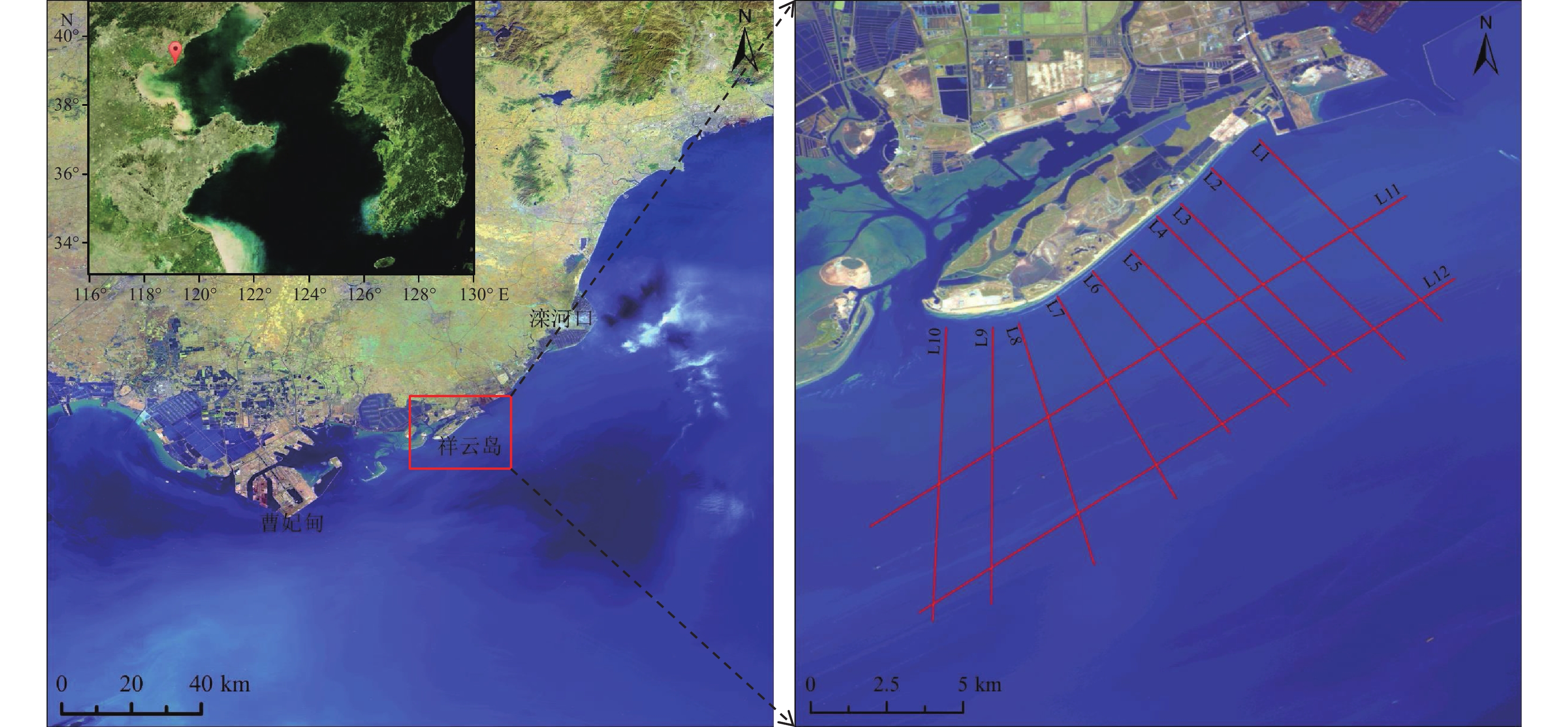
 下载:
下载:

